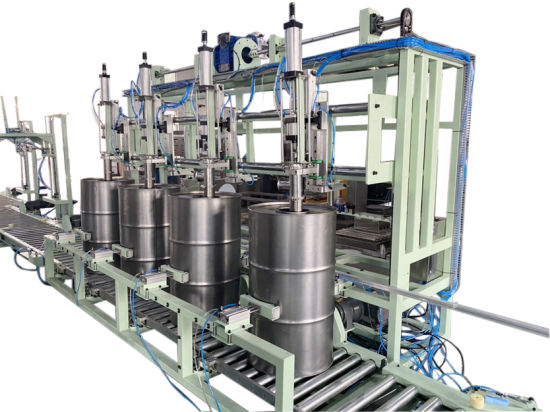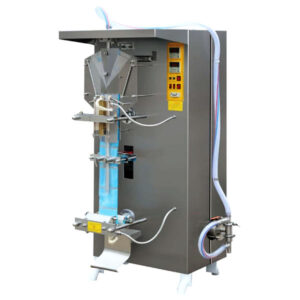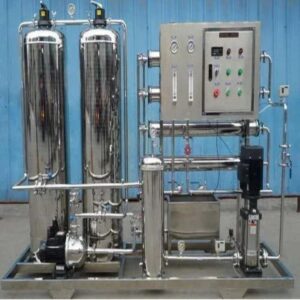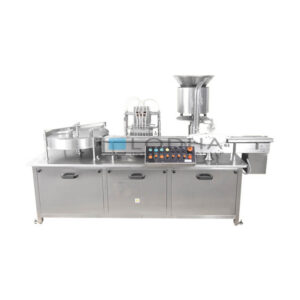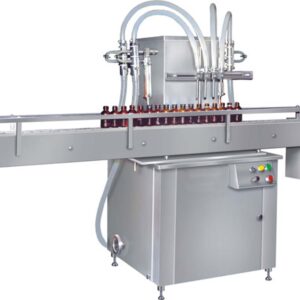Description
-
Specification Description Capacity 55-gallon drums (other sizes customizable) Filling Speed Up to 10 drums per minute (adjustable) Filling Accuracy ± 0.1% Material Compatibility Compatible with various oils and viscous liquids Power Requirements 220V AC, 50/60Hz, 3-phase Control System PLC-based control system with touchscreen interface Construction Stainless steel frame and components Safety Features Emergency stop button, safety guards, overload protection Dimensions Customizable based on space and production needs Weight Varies based on configuration Certification CE compliant, meets industry safety standards - Efficient filling of drums is very important in different industries, particularly within the oil and chemical sectors. To reduce spillage, facilitate measurement accuracy, improve productivity rates, and generally streamline this process, oil drum fillers play a crucial role. This article discusses various aspects of oil drum filling machines touching on their types, applications, functions, trends, and advantages among others.
-
Understanding Oil Drum Fillers
- Drum filling machines or simply oil drum fillers are special equipment designed for pouring liquid products such as oils, chemicals, greases, and dangerous substances into drums. The purpose of these machines is to automate the filling process thus giving precise control over volumes and flow rates to ensure that no waste occurs during the filling process.
-
Types of Oil Drum Fillers
- Different types have been developed with each one designed for specific applications and production requirements:
- Gravity Fillers: These are simple types that operate by allowing the liquid to flow from a higher position to inside the drum through gravity force. They are good for low-viscosity liquids where precision is not so demanding.
- Pump Fillers: Pump-based fillers use pumps to transfer product into drums. They can help control flow speeds better making them ideal for having accurate amounts required for viscous fluids or when precise volume determinations should be made.
- Net Weight Fillers: Net weight filler measures both the drum’s weight and its contents before and after filing thereby guaranteeing accurate volume determinations. Such kind of fillers are used mainly in high-value or exactitude operations where volume control is key.
- Overflow Fillers: Overflow filling machines can achieve consistent fill levels across many containers since they allow excess fluid to trickle out freely once the drum fills up with products until it goes beyond its top limit.
- Vacuum Fillers: On one hand vacuum pressure aids fast efficient filling of drums while on another; such systems effectively minimize spillages as well as wastes while working with foams or volatile substances.
-
Applications of Oil Drum Fillers
- Some of the diverse areas where oil drum fillers can be utilized are as follows:
- Oil and Gas: Filling drums with various oils, lubricants, and fuel additives.
- Chemical Industry: Filling drums with chemicals, solvents, and different special fluids.
- Food and Beverage: Filling drums with edible oils, syrups, sauces, flavourings etc.
- Pharmaceuticals: Filling drums with pharmaceutical ingredients, solvents and intermediates.
- Paints and Coatings: Filling drums with paints, coatings, or pigments.
- Cosmetics: Filling drums with lotions, creams, and similar cosmetic products.
-
Functions of Oil Drum Fillers
- Oil drum fillers serve many important purposes that help make filling operations more efficient and accurate including
- Volume Measurement: Determining either through volume or weight the exact amount of liquid being filled into a container such as a drum.
- Flow Control: To avoid overflow or under-filing of the barrels by controlling how fast liquid flows from its source to them so that they remain uniform
- Container Handling: Managing containers that may come in steel, plastic, or fibre form like safely handling steel pails for hazardous materials
- Automation: Using machines to carry out this task instead of people leads to fewer mistakes and thus more efficiency which results in reduced labor costs incurred by companies
- Safety Features: Integration of safety measures into these systems is meant to eliminate any potential leakages, spills, or contamination thereby safeguarding both humans as well as the environment around it at a given time
-
Future Trends in Oil Drum Filling Technology
- This includes technology such as Internet of Things (IoT) integration in oil drum fillers 4.0 concepts leading to remote surveillance systems’ incorporation into them, and proactive management procedures implementation via continuous performance monitoring.
- Advanced Control Systems: Use of sophisticated control systems such as PLCs (Programmable Logic Controllers) and SCADA (Supervisory Control and Data Acquisition) for more precision, flexibility, and connectivity.
- Robotics and Automation: The introduction of robotics as well as automation technologies would further improve the filling process, and reduce cycle times and overall efficiency.
- Green Technologies: The use of eco-friendly filling solutions like renewable energy sources, material waste reduction programs, and recycling or reuse efforts.
- Smart Packaging Solutions: Integrating intelligent packaging solutions which include RFID tags, and NFC labels; to trace products better, check their genuineness, or make it easier to communicate with customers.
-
Benefits of Oil Drum Fillers
- Oil drum fillers have a lot of advantages for manufacturers and suppliers:
- Increased Efficiency: With oil drum fillers, the process of filling can be automated thus reducing manual labor costs and leading to increased output capacity.
- Improved Accuracy: Precise measurement of volume flow rates ensures consistent amounts are put into containers hence minimizing wastage.
- Enhanced Safety: Safety features have been implemented to mitigate against spillages that might lead to the creation of unsafe conditions within work environments such as leakages, and explosions. etc
- Cost Savings: Reduced labour cost coupled with minimal material losses as well as enhanced production rate leads to cost savings at large.
- Compliance and Quality Assurance: Meeting regulatory specifications along with quality demands leads to conformity that enhances product consistency and quality.
-
Frequently Asked Questions
-
What is an oil drum filler?
- Oil Drum Filler is special machinery designed to make it easier for industrialists to fill drums with liquid substances like oils, chemicals, lubricants etc., automatically.
-
What are the different types of oil drum fillers?
- There exist a variety of Oil Drum Fillers such as Gravity Fillers Pump Fillers Net Weight Fillers Overflow fillers Vacuum Fillers which are suitable for diverse applications or production needs
-
How does an oil drum filler work?
- They can prepare drums through various methods such as gravity flow rate pumps vacuum pressure system overflow systems. All this while controlling the flow rate and ensuring that there is no wastage in terms of fluid measurement done by them.
-
What industries use oil drum fillers?
- Industries ranging from petroleum refineries through chemical companies up to food and beverages pharmaceuticals paints and coatings cosmetics among others utilize this type of equipment for packaging liquids they produce.
-
What are the benefits of using an oil drum filler?
- Benefits associated with the use of these machines include improved accuracy when measuring volume; enhanced safety especially during handling hazardous materials; cost savings due to labour reduction lower raw material content besides provision regulation standards.
-
What should I consider in choosing my oil drum filler?
- Choosing the correct oil drum filler may depend on the following factors; type of liquid to be filled, production volume, required precision, and specific industry regulations.
-
Can I get an oil drum filler with safety measures?
- Essential safety features include spillage prevention systems, emergency stop buttons, and interlocks to ensure safe working conditions and meet industry standards for safety.
-
Can Oil Drum Fillers be customized to meet specific needs?
- Absolutely yes, many manufacturers of oil drum filler have various options that they give their customers for this equipment. Some examples of such requirements are the size of drums used in filling as well as volumes that can be filled and other special features that may be needed – all these vary from one application to another.
-
How do I maintain an Oil Drum Filler?
- Typically cleaning regularly is a condition for maintenance besides maintaining seals and valves and checking moving parts which require lubrication as well as calibration of measurement systems mainly to ensure accuracy plus reliability.

